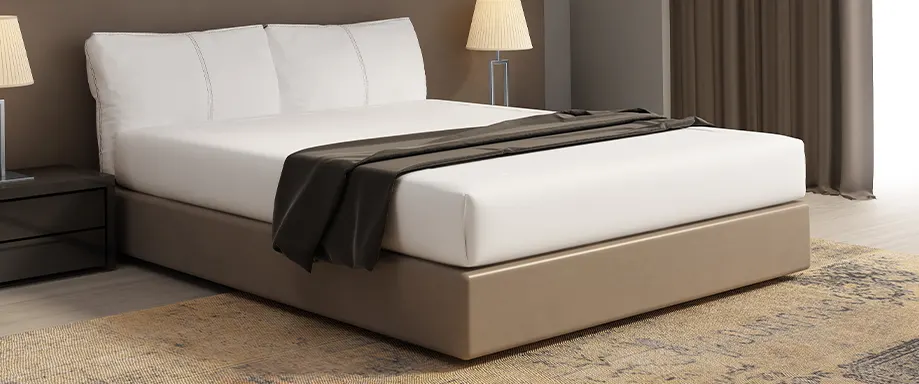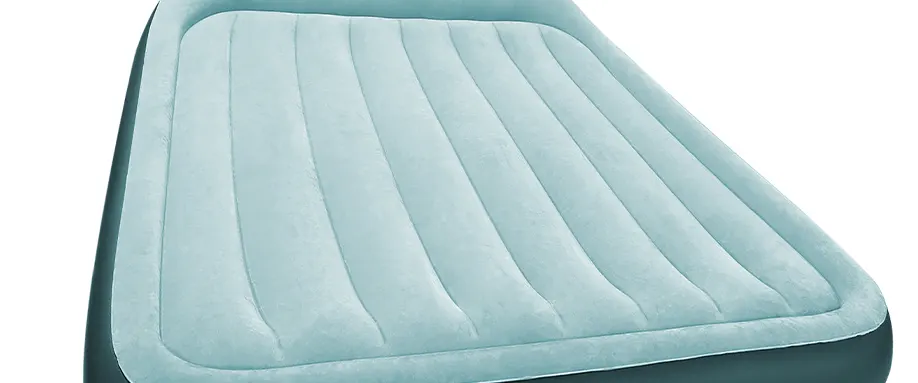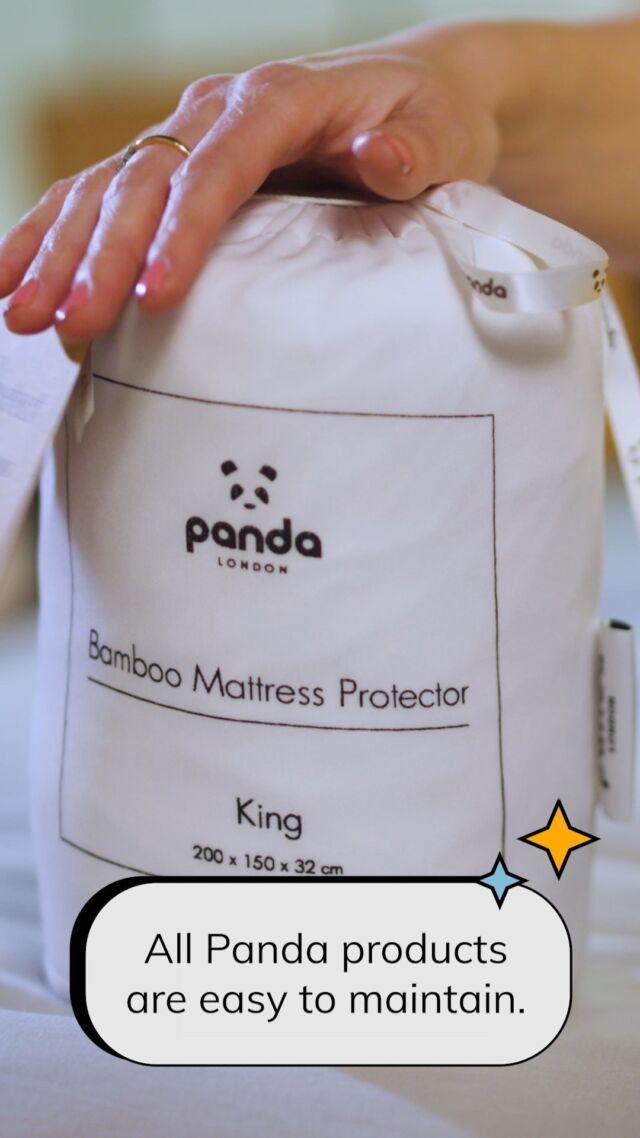What is a memory foam mattress?
First, let us talk about memory foam mattresses, as they're a bit more popular than their latex counterpart. The first thing you should know about this particular type of polyurethane foam mattress is that it is made either of crude or soy oil. And as you could imagine, they're not the most natural or eco-friendly mattress type.
However, the thing most people know (and love) about memory foam mattresses is that they gently compress when pressure is applied – that is when we lay on the bed. And, when we get out of bed, the memory foam returns to its natural shape. This measure of adaptability means that an average memory foam mattress will probably suit most people as it contours to your body shape.
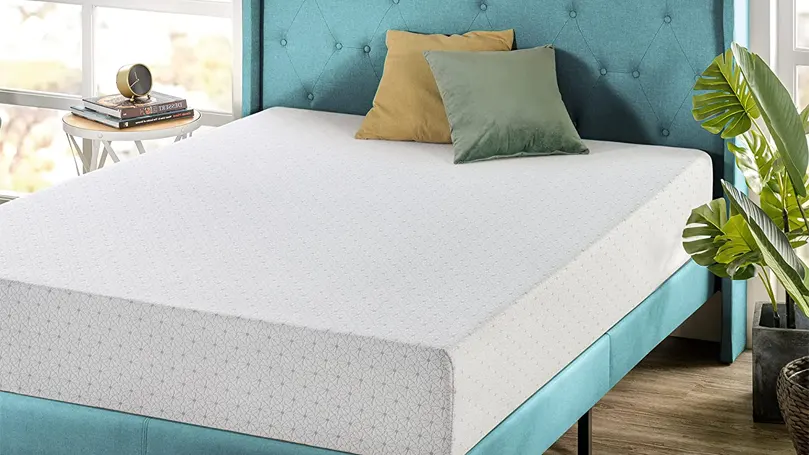
Of course, as there are different types of sleepers, memory foam mattresses can come with different foam layers as well. Some are, for example, more dense, so the mattresses are firmer. Others are less dense, so the mattresses are softer. And some feature specific materials that boost certain qualities – like how gel memory foam or infused graphite provide extra cooling.
However, this brings us to the big contention point – temperature regulation. As we've said, memory foam beds make for excellent comfort since the foam adapts to your body and figuratively hugs you. But this also leads to heat retention and in some cases, overheating.
This isn't always the case though. As we've mentioned, the foam can be treated in order to make it more cooling, and if you don't sleep hot, it also shouldn't be an issue. In fact, if you live in a colder climate, this might even be a good thing!
So, overall, you should be able to tell why memory foam mattresses are as popular as they are. In fact, memory foam was initially created by NASA to suit astronauts. Sure, they're made from synthetic materials and can cause some overheating but they're also incredibly comfortable and can suit just about anyone.
Recommended reading: Best Memory Foam Mattress UK
What is a latex foam mattress?
Now that you know the basic characteristics of memory foam mattresses, let's continue this latex vs memory foam mattress battle by telling you all you need to know about latex mattresses.
First, understand that there are two types of latex foam. You can choose between natural latex foam and synthetic latex foam. Natural latex mattresses are typically made of rubber tree sap. Synthetic latex mattresses are made from a mix of synthetic materials (typically plastic materials).
For making a latex bed, that is, a latex mattress, two techniques can be used – Talalay and Dunlop. For the Talalay latex mattress, the mould is filled with the tree sap only partially while the rest of the mattress is filled with air. This is why the Talalay latex is soft and pillow-like. Dunlop latex mattresses on the other hand give quite a different feel. Since they are completely filled with tree sap and have no air inside them, they are firmer and less bouncy.

When it comes to the actual feel of most latex mattresses, they are on the firmer side, and thus might not be suitable for side sleepers. After all, when sleeping on your side, you want a bit of give so that your shoulder and hip can sink and keep your spine alignment healthy. But, on the other hand, this added firmness can be quite good for heavier sleepers.
Another thing you should have in mind when trying to choose between latex and memory foam is their life span. Memory foam mattress typically lasts around 6 years. But, a latex foam mattress on the other hand can often go for over a decade.
Pros and cons of memory foam mattresses
Now that we went through the general characteristics of memory foam mattresses, we'd like to go a bit more in-depth and explain exactly why you would or wouldn't want this mattress type. So, take note of how tempting those pros seem and then compare that feeling to the potential cons.
Pros of memory foam mattresses
First, let's go over all the main selling points that would make you want to buy a memory foam mattress.
Contouring to the body
When you lay on a memory foam mattress, the foam has enough give for your body to sink in, hugging you from all sides. This brings forth two major benefits – comfort and pressure relief.
In terms of comfort, most people will enjoy the soft, cushiony feeling of a memory foam mattress and it can easily suit most sleepers. So, if you're getting the mattress for the guest bedroom (for example) odds are, whoever comes over will have a good night's sleep.
And since the foam wraps around your joints, it also takes the pressure off, alleviating plenty of aches and making you feel more nimble. Especially for side sleepers, as your entire hip and shoulder are supported.
Extremely low motion transfer
If you share the bed with a partner or even a large dog, motion isolation is incredibly important. This is because if you're a light sleeper, you will potentially be woken up every time your partner or dog starts moving around.
And if you've ever slept on a cheap spring mattress, you've probably experienced this sleep quality ruiner. Luckily, even cheaper memory foam usually has very decent motion isolation as the dense foam “soaks up” most of the energy caused by tossing and turning.
Keeps you warm
Although this is a negative for hot sleepers (as we'll discuss later on), cold sleepers or people who live in colder climates can benefit a lot from the heat-trapping present with most memory foam mattresses.
After all, staying nice and cosy can be essential, especially if you don't turn the heating on during the night or generally get cold very easily. And if you couple a dense memory foam mattress with a duvet with a high TOG scaling, you can avoid all the shivering and discomfort that come with winter.
Hypoallergenic
Although this isn't that rare of a feature, it still deserves to be brought up. When a bedding product is labelled as hypoallergenic, it means that asthma and allergy sufferers don't have to worry about flare-ups caused by said product.
And if you've ever experienced either of these two conditions, you'd know that they can make falling asleep rather difficult and even wake you up in the middle of the night in some extreme cases. But, as we said, this is a pretty common feature these days, and not every memory foam mattress is going to be hypoallergenic.
Inexpensive and easy to find
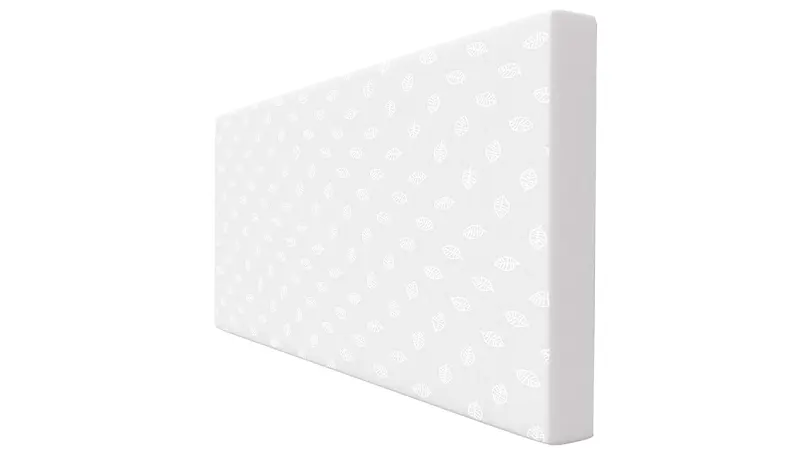
Aside from the added comfort, this is probably the biggest selling point memory foam mattresses have. Nearly every mattress manufacturer has memory foam models and due to that variety, they can also be very affordable.
Of course, you have more expensive models that come with all sorts of unique features, like cooling gel and zoned support, but even the cheaper models are rather decent. And it always helps if you can find what you're looking for in seconds as opposed to searching for days or having it shipped from another country.
Cons of memory foam mattresses
Now let's talk about why a memory foam mattress might not be the most ideal choice for you.
Prone to overheating
Although it's a perk during winter, it can be quite the buzzkill during summer. After all, overheating can impact sleep in rather major ways as your core body temperature needs to drop in order for you to even fall asleep.
And let's face it, no one wants to wake up covered in sweat with the sheets sticking to their back. But if you live in a warm climate and/or are a hot sleeper, this can happen if you get a memory foam mattress.
Or at least that's the case when it comes to low-to-medium-range models. More expensive memory foam mattresses often feature cooling gel or graphite-infused foam that boosts the breathability of the mattress significantly.
Heavy and bulky
In order to make a memory foam mattress, the foam itself is usually very dense. And that means that they aren't always very light or easy to carry around. Not to mention that memory foam also reacts to temperature changes, expanding under heat and constricting when it's cold, which means that fitting it into the bed frame can also be a bit difficult.
This isn't too much of an issue, as no mattress is as light as a feather, but it's something that you should keep in mind – especially when it comes to setting it up on the first night.
Off gasses (during the first couple of nights)
This is another minor inconvenience that we want to point out. Upon getting a memory foam mattress, expect a not-so-pleasant smell to hit you. It doesn't last long, however, as the smell will dissipate during the first one or two nights.
However, this is still important to mention as if you were planning to immediately jump into bed on your new mattress, you could be in for quite the unpleasant surprise.
Not the best longevity
When it comes to longevity, there are two major factors you need to be aware of. First off, foam tends to droop after a while, leading to poorer support and an overall worse sleeping experience. You will definitely get a decent 4-5 years out of the mattress but expect a gradual decline from that point on.
Secondly, maintaining a memory foam mattress isn't the easiest thing in the world. Memory foam often can't come into contact with certain chemicals and foam itself isn't durable for most machine-washing. So, getting a mattress protector will save you from a lot of hand-scrubbing.
Pros and cons of latex foam mattresses
Now that you know all the ups and downs of memory foam, it's time to turn our gaze towards latex. Just like in the previous segment, we'll go over all the pros and cons and then you can decide which model seems better overall.
Pros of latex foam mattresses
Now let's talk about all the reasons a latex mattress would be the perfect choice for you.
Breathable
Unlike memory foam, latex generally doesn't have too many issues when it comes to breathability and temperature control. This isn't to say that it can't keep you warm during the winter but rather that overheating isn't nearly as much of an issue.
So, as long as you have a good winter duvet, you don't have to worry about much – especially if you opt for natural latex. This makes it ideal for hot sleepers.
Firmer and more bouncy
Although this aspect depends on how the latex was treated (as discussed in the opening paragraph), on average, a latex mattress is going to be firmer and more bouncy than its memory foam counterpart.
Being firmer means that it's a lot more comfortable for back and stomach sleepers (especially if you're on the heavier side) and the added bounce is a very nice feature to have for most couples.
Smaller in size and lighter
Generally speaking, latex mattresses tend to be a lot easier to move around than models made from memory foam since latex is less dense. And if you commonly flip or rotate the mattress, this could be a very significant perk.
Plus, the initial setup tends to be a lot easier as well, since latex reacts much faster than memory foam. So, you won't have those jump scares of thinking that you got the wrong mattress size for your bed frame.
Really good longevity
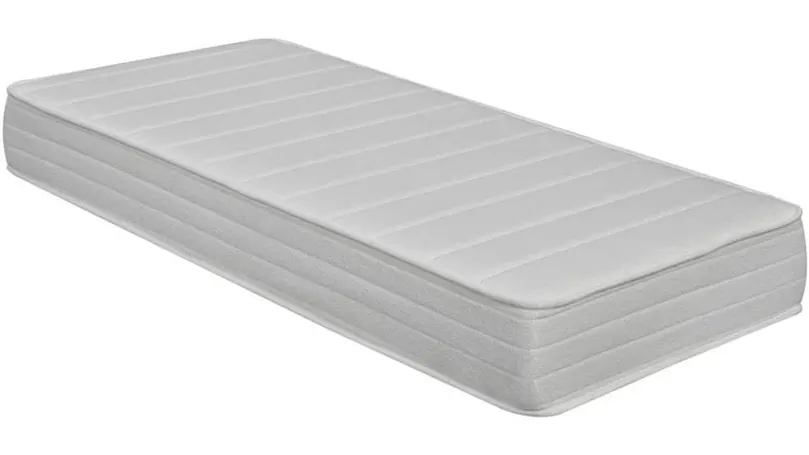
Latex is very sturdy and thus you should expect it to stick around for quite some time (sometimes even over a decade). And since its structure is also a bit more stable, you don't have to worry about a sudden drop in quality or drooping.
Not to mention that keeping the mattress clean is also a lot easier since the added durability mean you don't have to be nearly as careful. And if you're prone to spilling your coffee in bed, this could be quite the perk to have.
Cons of latex foam mattresses
And now let's point out all the reasons you might not want a latex mattress.
Expensive
The biggest turn-off for a lot of people when it comes to latex mattresses is the price. While memory foam generally has a model for every price point, latex mattresses (especially those with natural latex) start and end in the luxurious section.
Yes, since they last longer, it's to be expected that they would be more expensive, but some people simply can't afford to drop that much money at once. So, if you're looking for a budget-friendly option, you'll have to do quite a bit of research if you want to find a latex model that works for you.
Synthetic latex is not eco-friendly
Although the eco-friendly nature of bedding products isn't too important for some people, it's still worth pointing out. Just like foam, synthetic latex is awful for the environment – especially since it usually contains plastics.
So, if you do want an eco-friendly mattress, you either have to spring for the natural latex or find a recyclable spring mattress.
Some people might be allergic to latex
Even if the mattress is labelled as hypoallergenic, there's very little the mattress manufacturer can do if you're simply allergic to latex. And as we've touched upon before, allergies can damage your sleeping quality quite significantly.
Could be too firm for side sleepers
If you sleep on your side and you're of slightly heavier weight, latex might be a bit uncomfortable. This is because latex (especially natural latex) doesn't have as much give as memory foam – thus, your hip and shoulder won't be able to dip in and keep your spine straight.
Most of the time, this only applies to heavier sleepers but if possible, try the mattress out before committing to a purchase and see whether your spine is bent. After all, latex reacts to pressure quickly, so what you experience in the store is decently indicative of what you'll feel at home.
So, which one should you choose?
At the end of this latex vs memory foam, which one should win? The answer to this question, just like previously mentioned, depends on many things. But, if you need a helping hand when making this decision, consider this:
If you:
- Don't have issues with overheating/sleeping cold
- Want an affordable mattress that's easy to find
- Sleep on your side and/or want good cushioning
Then you should probably get a memory foam mattress. However, if you:
- Want a mattress that'll remain comfortable for a really long time
- Sleep on your back/stomach and/or like a firmer mattress.
- Sleep hot and require good breathability
We suggest getting either a synthetic or a natural latex mattress.
How about choosing something in between?
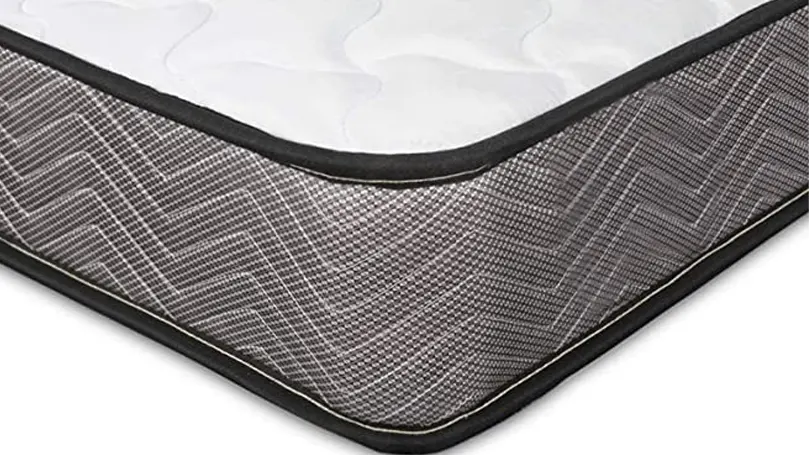
There are people who still can't make up their minds when it comes to choosing a foam mattress even though they read all there is to them. Well, for that too we have a solution. Namely, if you like both mattresses, both latex and memory foam, why not go for a hybrid type?
Hybrid mattresses can be a combination of spring mattresses and foam or spring mattresses and latex. These have the best of both worlds – the perfect blend of spring and foam will offer you comfort and support. Springs will make your bed bounce and the upper layer of foam will feel like you're sleeping on a cloud.
Or pair the mattress you bought with the right topper. For instance, if you have a memory foam mattress that feels too soft, buy a latex mattress topper. And, vice versa. If your latex mattress is just too hard, buy a memory foam mattress topper. Besides making you feel better, these toppers will also prolong the lifespan of your mattress. Hopefully, the latex vs memory foam comparison will help you decide the best mattress for you.

